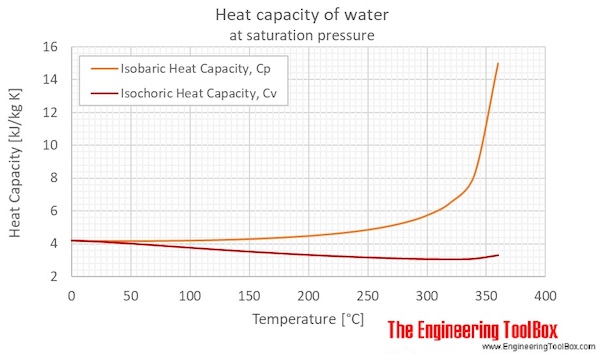Example 5.7: Bomb Calorimetry
Bomb Calorimetry
When 3.12 g of glucose, \(\ce{C6H12O6}\), is burned in a bomb calorimeter, the temperature of the calorimeter increases from 23.8 °C to 35.6 °C. The calorimeter contains 775 g of water, and the bomb itself has a heat capacity of 893 J/°C. How much heat was produced by the combustion of the glucose sample?Solution
\(q_{\mathrm{rxn}}\) = ?\(m_{\mathrm{glucose}}\) \(= 3.12\ \mathrm{g}\)
\(m_{\mathrm{water}}\) \(= 775.\ \mathrm{g}\)
\(T_{\mathrm{initial}}\) \(= 23.8\ \mathrm{°aC}\)
\(T_{\mathrm{final}}\) \(= 35.6\ \mathrm{°aC}\)
\(C_{\mathrm{V,bomb}}\) \(= 893\ \frac{\mathrm{J}}{\mathrm{°ΔC}}\)
\(c_{\mathrm{V,water}}\) \(= 4.184\ \frac{\mathrm{J}}{\mathrm{g}\ \mathrm{°ΔC}}\)
The combustion produces thermal energy that is primarily absorbed by the water and the bomb. (The amounts of thermal energy absorbed by the reaction products and the unreacted excess oxygen are relatively small and dealing with them is beyond the scope of this text. We will neglect them in our calculations. The heat capacity of water depends on the temperature and on whether the pressure or the volume is kept constant. For this problem, we will use 4.184 J/(g °ΔC) to be consistent with the answer printed in the textbook)

The thermal energy produced by the reaction is absorbed by the water and the bomb through heat transfer:
\(q_{\mathrm{rxn}} = - q_{\mathrm{water}} + q_{\mathrm{bomb}}\)
\(q_{\mathrm{water}} = c_{\mathrm{V,water}} \cdot m_{\mathrm{water}} \cdot ΔT\)
\(q_{\mathrm{bomb}} = C_{\mathrm{V,bomb}} \cdot ΔT\)
\(ΔT\) \(= T_{\mathrm{final}} - T_{\mathrm{initial}}\)
\(\ \ \ =35.6\ \mathrm{°aC} - 23.8\ \mathrm{°aC}\)
\(\ \ \ =11.8\ \mathrm{°ΔC}\)
\(q_{\mathrm{water}}\) \(= c_{\mathrm{V,water}} \cdot m_{\mathrm{water}} \cdot ΔT\)
\(\ \ \ =4.184\ \frac{\mathrm{J}}{\mathrm{g}\ \mathrm{°ΔC}} \cdot 775.\ \mathrm{g} \cdot 11.8\ \mathrm{°ΔC}\)
\(\ \ \ =3242.6\ \frac{\mathrm{J}}{\mathrm{°ΔC}} \cdot 11.8\ \mathrm{°ΔC}\)
\(\ \ \ =3.83\times 10^{4}\ \mathrm{J}\)
\(q_{\mathrm{bomb}}\) \(= C_{\mathrm{V,bomb}} \cdot ΔT\)
\(\ \ \ =893\ \frac{\mathrm{J}}{\mathrm{°ΔC}} \cdot 11.8\ \mathrm{°ΔC}\)
\(\ \ \ =1.05\times 10^{4}\ \mathrm{J}\)
\(q_{\mathrm{rxn}}\) \(= -(q_{\mathrm{water}} + q_{\mathrm{bomb}})\)
\(\ \ \ =-(3.83\times 10^{4}\ \mathrm{J} + 1.05\times 10^{4}\ \mathrm{J})\)
\(\ \ \ =-4.88\times 10^{4}\ \mathrm{J}\)
\(q_{\mathrm{rxn}}\) \(= -4.88\times 10^{4}\ \mathrm{J}\)
\(\ \ \ =-48.8\ \mathrm{kJ}\)
This reaction released 48.7 kJ of heat when 3.12 g of glucose was burned.